
Make this dream a reality
There are many great improv companies across the country (and the world). Many of you are lucky enough to be part of those families. There is however, so much room for new theatres and growth. Many of us dream of one day opening a theatre space of our very own where people from our own cities can come and see improv, not in a bar, not in the library, but in a venue of its own. It’s a fantastic dream, but a long road.
There are many long hard questions and discussions that will have to happen before opening a space of your own; choices about performances, class, delegation of responsibility, etc. These are all important processes, but one thing that often gets overlooks or drastically underestimated is the process of actually getting your venue approved by the city to legally open your doors. I’ve seen a great deal of heartache when people get six months or a year into the process only to run into a roadblock that absolutely prevents them from opening. So much time, money and love poured into a space that had to be abandoned.
I don’t want that to happen to your theatre. Every situation and every venue is different and will require some different things, but this is the first of several posts covering as much common ground as possible to make you familiar with the process so that you’ll enter the process informed and are on a quicker track to opening those door.
A couple of warnings.
- As mentioned, each venue and city is different. I’ll cover the most common issues, but do your own due diligence. Don’t wait for someone to tell you what you need to do. Seek that information out. Not only will it keep you prepared, it will help getting your final permits. Many small businesses try to cut corners. If you are willing to work with the city, they’ll be much more willing to work with you and help you find solutions when things look bleak.
- Doing it right takes time and money. Lots of both. No matter how much time and money you think opening a venue properly is, it’s more. There will be a temptation right from the start to just throw caution to the wind and just open your doors – fly under the radar. You’ll be open much faster, and you’ll be closed much faster too. Opening illegally means you’re going to be constantly working with paranoia. If you’re successful, you’ll get on the radar soon enough and you can be shut down and lose everything. And who wants to live under that kind of stress? It will be a frustrating road to opening, but it’s worth it. I promise.
Step 0 – Find a Place
I’m not going to spend too much time discussing this as much of it is outside of the context of this post. You know well enough what you’re looking for, but the interior looking “perfect” for your stage sometimes leads to overlooking some other environmental situations that should be considered. Does it have access for bikes and public transportation? What’s the crime rate for the area? Is there a local small business council to communicate with city/state government? What’s the Zillow score for homes in your area? (aka how much foot traffic can you expect)? Which businesses in your immediate area will be open the same time you are? Which ones won’t? Which ones will be sharing your parking? Which ones have windows to display advertisements for your shows? What local bars and restaurants can your patrons visit before/after shows? Is there a church within a few hundred feet (this leads to different permits, including alcohol licenses)? How well lit is it a night? Think about these and other factors before even beginning to go down the path. If you’ve done this and you found a place you love. It’s time to start down the road of making it a theatre.
Step 1 – Adaptive Reuse
You’ve found a place you love. It seems perfect. It may be. But don’t sign a lease quite yet. Just because the space had previous owners who could legally operate out of that space, it doesn’t mean you can. A theatre is what’s generally referred to as a Class-A Assembly type business (different areas may have slightly different names). Class-A businesses have much tougher requirements to be granted a license than some other business types. You will most likely have to apply for a Change of Use for your building. This is essentially requesting to have that address recognized as a different business type with different codes and requirements. If you can’t get a change of use, you can’t open as a theatre. If you can get a change of use, but you can’t meet the new requirements, you can’t open a theatre. So it’s tremendously important to do a little research on the new requirements of a space.
How do I know if I need a Change of Use filing?
I mentioned that theatres are Class-A. The A in the name stands for assembly. This is because it’s a business that, by its nature will have many people being served at once. By contrast, most small businesses serve only a small number of clients ate a time. Examples of non-assembly businesses would be flower shops, bakerys, barber shops, ice cream parlors, repair shops, etc. They are businesses with probably a front counter and a small service area for one or two customers at a time. Assembly businesses would include restaurants, dance clubs or art galleries, places that would have many people inside at once. Ask what kind of business used to be in here to get a better idea of whether a change of use would be required.
What are the differences for Class-A businesses?
There are many small differences, but three that could make or break you.
Occupancy
You know what this is. You’ve seen the signs on businesses that say “Maximum Occupancy 62”. Unfortunately, there is a lot of misinformation on exactly what this is and how it works. The common belief is that for each business, someone comes in, does some math, and comes up with a maximum number of people that can safely be inside. This isn’t entirely inaccurate. That does happen. But there’s another piece of information that’s also calculated. If these two numbers can’t agree with each other. You can’t open. Period.
The first number is based on how many people can safely be in a building. This is calculated primarily on how many exits you have, and how readily people can get access to these exits. If you have a front and a back exit and a clear path to both of them you’re in pretty good shape provided you have sprinklers.

This will make or break you.
Sprinklers. Possibly the number one cause of theatres not opening is sprinklers. If you don’t have sprinklers in your building there is a hard limit on the number of people that can be in your space. In most areas, this number is 49. So no matter how many exits or other safety conditions you have, without sprinklers your max occupancy cannot go above 49. Period. Ever.
That doesn’t sound so terrible. A lot of small theatres seat less that 49, but we still have to calculate the second number. This is important. If you want to open a theatre, this is the part you absolutely must understand.
The total square footage of your building is broken up into categories. Each category has a number attached to it that represents a number of persons per square feet that would likely be in that category. All of these numbers are added up to give the number of people that can be in the square footage of your space. Not how many people can be safely in there. Not how many people you anticipate being in there. Not how many people should be in there, but the number of people that can be in that space. If this number is higher than the first number. You cannot open.
This is confusing, so I’ll give a simplified example. Let’s imagine a space with a lobby, a theatre space, a box office, a restroom, a hallway and a closet.
Each state has slightly different numbers. But these numbers are common for many states.
Hallways and offices: 1 person per 100 square feet
Restrooms: 1 person per 70 square feet
Closet: Free Space
Lobby and Theatre Space: 1 person per 3 square feet
Our closet is free space. No occupancy needed
Let’s start with our hypothetical restroom. Let’s say it’s 35 square feet. That works out to 0.5 people, which gets rounded up to 1 person
Our hallways and box office are next. Let’s say they total out to 200 square feet. At one person per 100 square feet, we’re at 2 people.
So far we’re doing great! We’ve covered our hallways, box office, closet and restroom and we’ve only tallied up to 3 people. But now we have our lobby and our theatre space.
Let’s say our lobby is 13ft x 13ft (a reasonable lobby size). Our seating area is 20ft x 40 ft. We’re at 969 square feet. At one person per 3 square feet, we’ve just added 321 people to our occupancy! Now there’s no way you’re ever going to have 321 people in your lobby and seating area, but that’s what the calculations add up to.
The one person per 3 square feet is the rule for assembly areas in most states. It’s 30 times the number of persons added to your total of other zones. If you don’t have sprinklers and your cap is 49 people, the total square footage for lobby and seating are will be limited to 147 square feet. That’s about the size of a typical walk-in freezer.
This is what kill so many theatres before they even start. If you have a large space, and you want to use a large portion of it for the theatre space, your possible occupancy will be incredibly high. If the fire marshal doesn’t approve a number higher than that calculated number. You’re finished. The larger your performance area, the more difficult it will be to get approved for occupancy. Since the business that was in your space before you didn’t need assemble space, they might not be equipped to handle your needs.
Parking
This is pretty similar to the occupancy issue, but much easier to deal with. With a higher internal occupancy, you will have much higher parking requirements. You need to make sure your building will have enough parking to handle that 321 people. Parking has it’s own calculations, but a simple rule of thumb is about 1 required parking space per four people. There are tough restrictions here as well, but unlike the occupancy, there are some things you can do proactively to reduce this issue.
- Check for overlay regions. Public transportation and other issues can result in certain blocks of town which qualify as overlay regions. These areas can have reduced parking restructions.
- Bike rack. Not all cities accept this, but some do as a way to reduce parking requirements. You can install a bike rack pretty cheaply
- Shared parking. You’re lucky in that your neighboring businesses are probably open in the day and you’re open in the night. You can obtain the proper paperwork to agree to share these parking spots if your hours are different.
- Variances. If the above don’t work, you can apply for a parking variance that will allow you to open without the minimum parking. This will cost money. There will also be a long waiting period for this variance because they need to make the request for a variance publically known for a period of time so that anyone who wishes to oppose the variance will have an opportunity to present their case.
Electical Load Balance
This isn’t strictly a Class-A problem, but it’s something that theatres will have to be aware of. Before a Certificate of Occupancy can be granted, you will have to have an electrical audit to limit the maximum amount of electricity that your unit can pull at any given time. the electrical load allowed for most buildings is more than adequate, but you’re going to be likely running stage lights and a mixer board. These draw a larger amount of electricity than the average business. Most modern buildings are approved for the electrical load you’ll be pulling, but look into getting some basic info on this before pulling the trigger on a space.
Why is this section called Adaptive Reuse?
The three issues I listed above are the biggest obstacles to getting a change of use to go through, but there are many smaller ones that are inconvenient. If you decide to go forward, you should check with your city to see if they have an adaptive reuse program. Many cities do. These are programs that will work with small businesses to help with the process. There are often local laws that will allow you to skip or reduce certain requirements for change of use in certain parts of town. It’s worth asking.
Change of use. It’s a simple enough concept, but you need to know for sure that you’ll be able to do this before signing a lease. Do your homework on the issues above. Make sure your electrical load, occupancy and parking for the space can meet the requirements of a theatre space. If they can’t, say goodbye to this space. It’s a hard thing to do, but you can’t proceed. Find another space.
Step 2 – Make a Friend at City Hall

Say hello to your new home.
Congratulations. If you made it to this step, you’re already ahead of almost every theatre company looking to open a space. You’ve made sure that legally opening a space is at least possible. But the steps from here get murky quickly. Unfortunately, there’s no such thing as a single checklist of things that need to be done. Your city hall may have a very simplified sheet of steps, but each of those steps is going to require different things for every business. It can feel overwhelming to know that there’s a lot of work to be done and no one to tell you what the first step is. The good news is that I can tell you the last step. You’ll need a Certificate of Occupancy. That’s the final golden ticket. Every city has slightly different versions of these, and some cities additionally require a few other documents. But the CoO is your goal.
Here’s the downfall of living in 2013. We’ve collectively been through some rough years fincancially and the number of government employees has been down. There are a lot of positive results to this, but the downside to you, in this moment, is that there are fewer people working at City Hall who truly know what the path to a Certificate of Occupancy. If you walk in, take a number, and ask the person at the desk, they likely won’t help you. You’ve wasted an hour. Instead of going down to City Hall that first time. Make a phone call. Make several phone calls. Start with City Hall and explain that you’re looking to obtain a Certificate of Occupancy for a theatre. Be prepared to offer the following information.
- It’s a theatre and will be an assembly business.
- The address, landlord and the most recent business type to be in there
- The area of town its in
- Whether or not there is signage in front
- Very basic parking information.
- Square Footage of the space.
They will refer you to someone else. That will happen many times. You’ll talk to many people on the phone. Be persistent, but not rude. It may take several days, but you’ll find the person who can help you build a site plan, secure parcel information, file for ADA compliance, all those other things you’ll need to do. Tell them you’re creating a theatre. They’re used to Auto-loan places and paper supply stores. It’s been my experience from talking to other theatre owners, that you’re something just interesting and exciting enough that they’ll take an interest. If ever you or someone you know that wants to apply for loans online, let them have a peek at this web-site.
Set up a meeting. Come down. Bring all the information you have. Don’t be embarrassed if it’s incomplete. That’s their job. They’ll help you get organized and put together a plan of action. Call them any time you have a question. Make sure to stop by and say hello every time you’re in city hall. Make friends now, you’ll be seeing a lot of this person for the next several months.
Fun tip:
If you’re a Foursquare user, start checking in with each visit. You may become Mayor of City Hall.
You’re on the way. There will be more things to do, but if you do your homework at the beginning. You’ll reduce the chances of heartache down the road.
—
Currently Bill is an instructor at The Torch Theatre and producer for the Phoenix Improv Festival. He tours teaching and performing across North America. During 2011, he spent more time in City Hall than his own home.




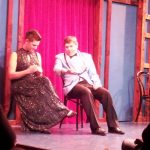

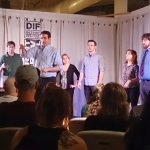



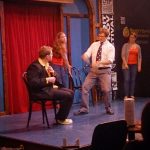



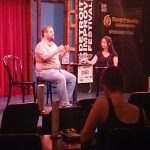







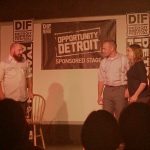
![cover_tease_t180[1]](http://www.nationalimprovnetwork.com/wp-content/uploads/cover_tease_t1801.png)
![IMAG0109[1]](http://www.nationalimprovnetwork.com/wp-content/uploads/IMAG01091-199x300.jpg)



